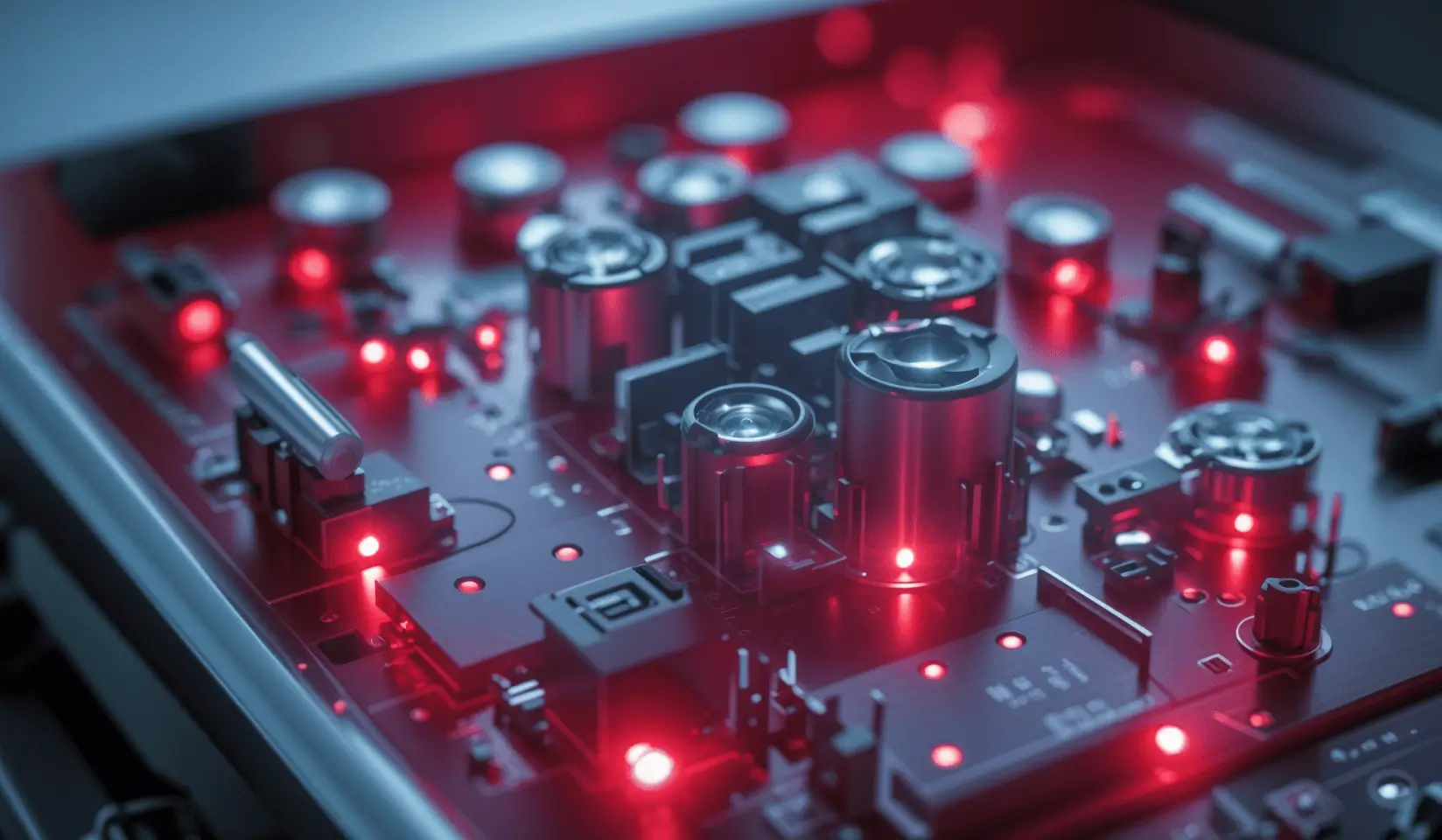info@amethystresearch.net
Technologies


Developed for Government Agencies in Collaboration with Organizations in the Infrared Systems' Supply Chain.
We developed our extensive infrared technology know-how through 20 years of client-funded research (US government, UK government, private companies) and in-house R&D efforts. Many of the technologies in our portfolio stem from 60+ highly competitive government awards. We advance innovative technologies with commercial potential through:
-
Contract-based research (DOD & NASA contracts, Oklahoma Center for the Advancement of Science and Technology (OCAST), MoD contracts in the UK)
-
More exploratory, longer-term research (DOE & NSF grants, Innovate UK grants in the UK)
We achieve research results in collaboration with our partners & customers: research providers, manufacturers, other companies within the infrared supply chain, and systems integrators. With these interactions, our team develops the insights that lead us to deliver cutting-edge innovative technologies. We look forward to developing new technologies and solutions with you.


Our Current Scope
III-V Epilayers
(Al, Ga, In) (N, P, As, Sb)
Wide range of doping control (Te, Zn, etc.)
Substrates GaSb, InAs, InP, Si



There are many detector types corresponding to several important
applications of infrared sensing.
Here are prominent detector
types Amethyst Research staff are experts in:

nBn Barrier Detectors
Broadband response, low dark current for higher operating temperature or higher detectivity for infrared imaging, gas sensing, security, communications, medical imaging, and more

RCE-PDs Resonant-Cavity-Enhanced Photodiodes
Heightened response within a narrow band for maximum sensitivity for environmental monitoring, security and medical applications, spectroscopy

APDs Avalanche Photodiodes
Sophisticated structures
for low light level
detection
for telecommunications
medical imaging, environmental monitoring, security

SPAD Single Photon Avalanche Photodiode
A special case of APD useful for detecting single photons in a time-resolved way for quantum optics, quantum communications

Array Infrared LEDs
Large arrays of mid-infrared emitters are needed for infrared scene projector
Research and Development Areas
Resonant cavity enhanced photodetectors
Technology:
Performance MWIR and LWIR RCE-PDs with a ~50 times
reduction in absorber volume.
Goal:
Sensing of several important medical and
environmental gases including CO2, CH4, N2O, acetone
and glucose.
Customer:
European Commission (ATTRACT)
Technology:
Paired resonant cavity LED and RCE-PD at 4.472
microns for detection of N2O.
Goal:
Greater resolution and lower cost in subsurface gas
concentration measurements, leading to more accurate
parameters for more accurate modeling of complex
subsurface systems.
Customer:
US Department of Energy
Technology:
RCE-PD at 3.31microns, compatible with single-pixel
camera imaging, for methane detection in the MWIR
band.
Goal:
High sensitivity, low power, and lightweight imager
for UAV’s and handheld systems to boost the scope of
methane source mapping.
Customer:
US Department of Commerce
Technology:
LWIR RCE-PD (9.3 microns), paired with a sourced
Quantum Cascade Laser (Pranalytica) capable of ~ GHz
bandwidth.
Goal:
Free-space links using the LWIR band, where
atmosphere absorption and scattering are weak, for
secure communications.
Customer:
US Department of Defense (Air Force)
nBn infrared barrier photodetectors
Technology:
Sensor system for subsurface CO2 isotopologue
discrimination, incorporating broadband, low-dark
current nBn detector optimized for 4.36 microns.
Goal:
Low cost and accurate tool to support Monitoring,
Verification, and Accounting in
sequestration.
Customer:
US Department of Energy
Technology:
nBn detector on GaSb with absorber composition
optimized for 2.0-2.5 microns (e-SWIR transmission
band).
Goal:
Improved detectors for important e-SWIR
applications such as imaging with nightglow, seeing
through smoke/haze with less scattering, and
spectroscopy.
Customer:
US Department of Defense (Army)
Technology:
nBn detector with highly manufacturable III-V
materials, enhanced by hydrogenation and designed
for cutoff wavelengths of 2 to 5 microns.
Goal:
Infrared detectors with reduced cooling
requirements to bolster orbital and in situ
compositional analysis and mapping in future
planetary missions.
Customer:
National Aeronautics and Space Administration
(NASA)
Technology:
Octave-spanning (3-6 micron), GHz-bandwidth,
thermoelectrically cooled nBn detector with high
sensitivity (Noise Equivalent Power <
1pW/Hz^1/2).
Goal:
Step-function increases in speed and sensitivity
for portable, mid-infrared comb spectroscopy
systems, within the SCOUT (Spectral Combs from UV to
Terahertz) program.
Customer:
US Department of Defense (Defense Advanced
Research Projects Agency)
Avalanche photodiodes: APD, SPAD
Technology:
GaAs and InP-based SPADs as a pathway for high
volume scale-up of discrete components, monolithic
integration and a pathway for multi-functional
Quantum Photonic Integrated Circuits (QPICs).
Goal:
Improve epitaxial material deposition, fabrication
uniformity and reliability.
Customer:
Innovate UK (QFoundry project)
Technology:
SPAD at a telecom wavelength, InGaAs and GaSb based
and having > 100 MHz bandwidth, for integration with
an AlGaAs-on-insulator entangled photon source (U.
California, Santa Barbara).
Goal:
Disruptive component for emerging
ground-to-satellite and satellite-to-satellite
quantum encrypted communications and distributed
quantum sensing.
Customer:
National Aeronautics and Space Administration
(NASA)
Plasmonic detectors / metamaterials
Technology:
Low-loss infrared Ultrawide Type II Hyperbolic
metamaterials based on heavily doped InAs and
dry-etched into 1D square gratings with a period
shorter than 5µm.
Goal:
Use III-V metamaterials as a low-low plasmonic
material that can be integrated with traditional
III-V infrared devices such as photodetectors and
photoemitters at a large scale.
Customer:
US Department of Defense (Undersecretary Office)
Technology:
Integrated flat micro-lens arrays for III-V
infrared detectors to provide light concentration in
SWIR and MWIR.
Goal:
Improve detector performance by increasing signal
for a given noise level, including enabling smaller
diameter detectors that have higher bandwidths.
Customer:
Oklahoma Center for Science and Technology
(OCAST)
Infrared light emitting diodes (LEDs)
Technology:
Tunable (MWIR, LWIR) Type-II Superlattice LED
structures by heteroepitaxy on GaAs or Si.
Goal:
Affordable, high-power LED arrays with a high
dynamic range (versus resistor arrays), capable of
large areas and on a substrate with good heat
dissipation, as core components of scene projection
systems for infrared imager testing.
Customer:
US Department of Defense (Air Force)
Technology:
Resonant cavity Light-emitting diodes for infrared
gas spectroscopy.
Goal:
Use RC-LEDs to replace costly Quantum cascade
lasers (QCL) typically used for infrared gas
spectroscopy systems. Demonstrate their use for
environmental gas monitoring (N2O and other).
Customer:
US Department of Energy
Materials characterization and defect mitigation
Technology:
Marshaling a suite of ion beam methods (Elastic
Recoil Detection Analysis for H, Nuclear Reaction
Analysis for C and O, Particle Induced X-ray
Emission for mineral composition, and ion beam
Induced Luminescence) for quantification of C, H,
and O in shale.
Goal:
More efficient and integrated characterization of
shale to support oil and gas exploration.
Customer:
US Department of Energy
Technology:
Deuterium tagging for mapping of point defects of
CdZnTe (CZT) substrates.
Goal:
In-process inspection tool for correlating crystal
growth and wafer processing methods with defect
types and concentrations, to improve the operability
and yield of focal plane arrays grown on CZT.
Customer:
US Department of Defense (Missile Defense
Agency)
Technology:
Passivation of dislocation defects by hydrogenation
of HgCdTe on silicon.
Goal:
Improve the performance of HgCdTe on silicon in the
LWIR region by reducing and/or electrically
neutralizing the defects originating at the
substrate/epilayer interface.
Customer:
US Department of Defense
Technology:
Photon-assisted hydrogenation process technology of
HgCdTe Infrared Detectors.
Goal:
Improve the operability and performance of HgCdTe
NIR avalanche photodiode arrays to lower the
manufacturing costs of HgCdTe detectors.
Customer:
National Science Foundation (NSF)



